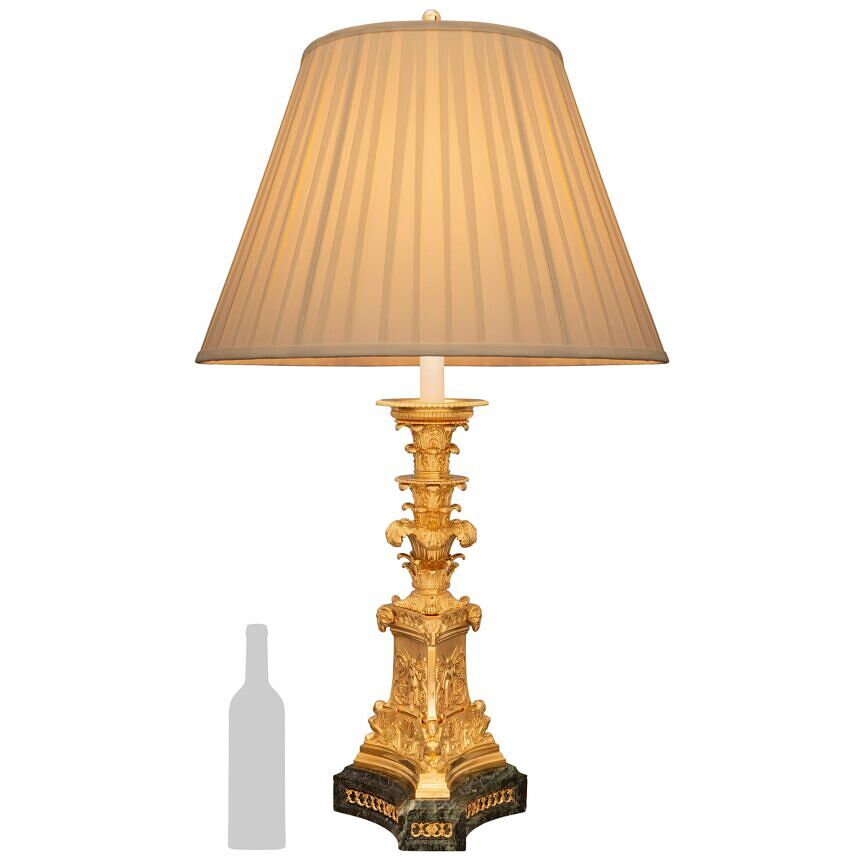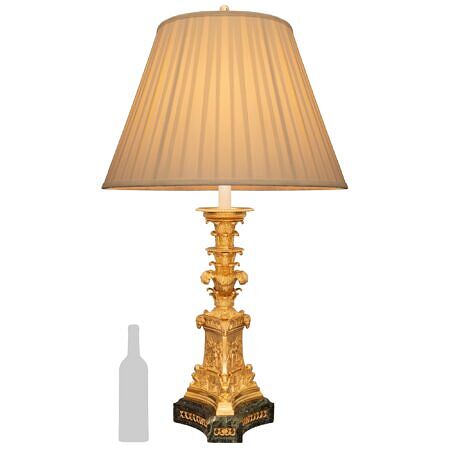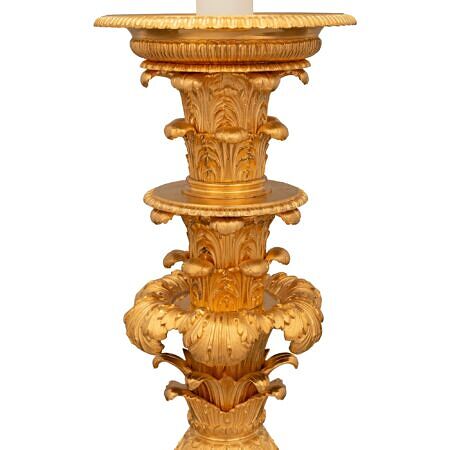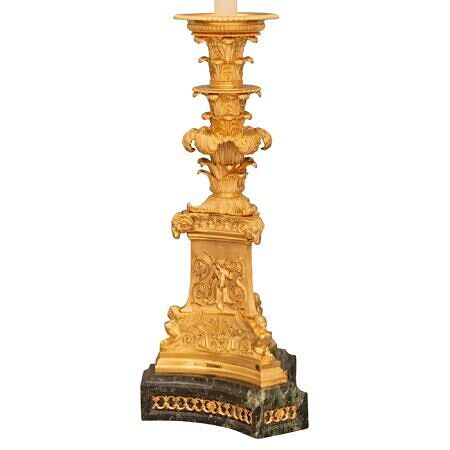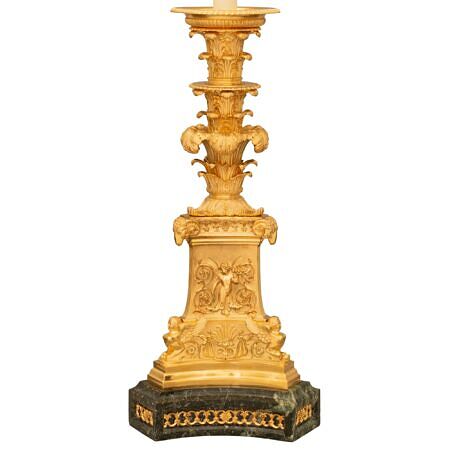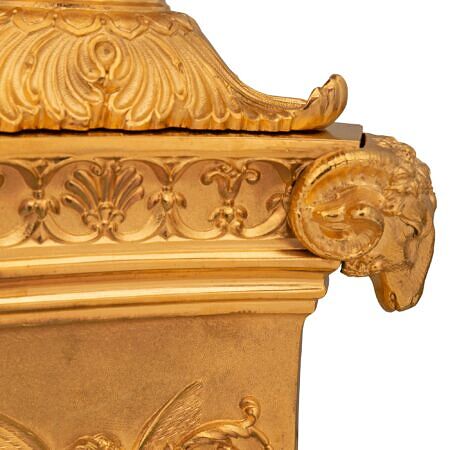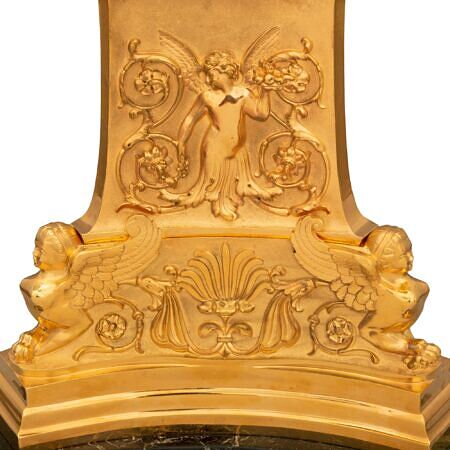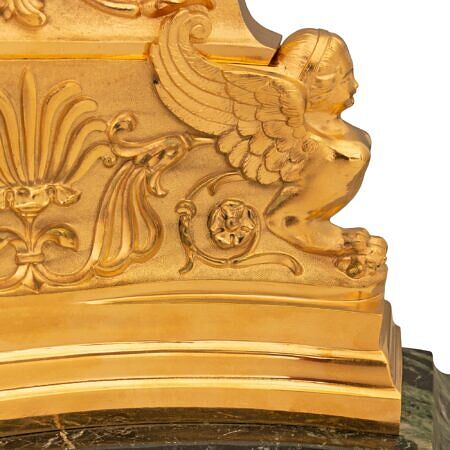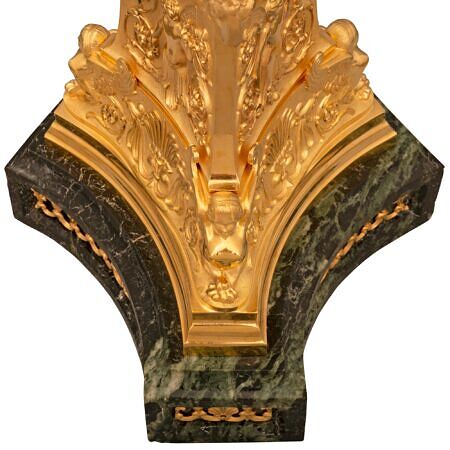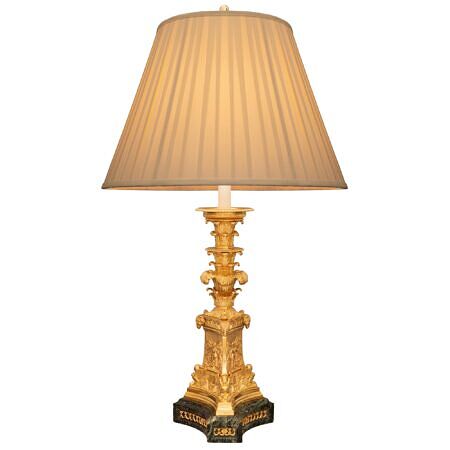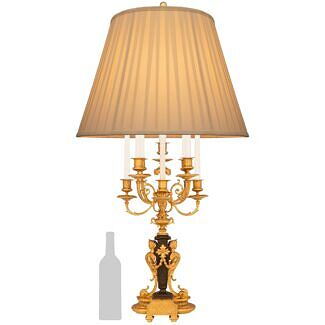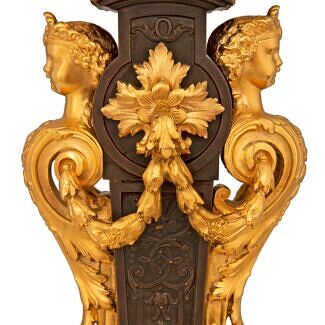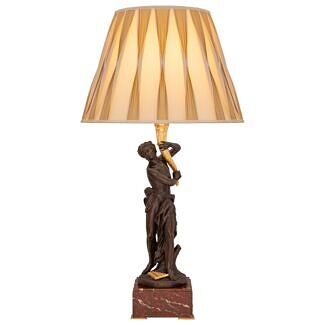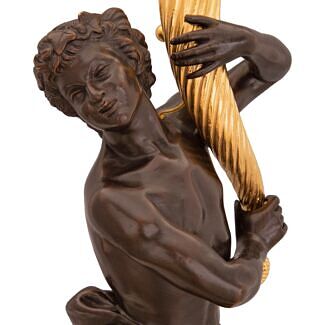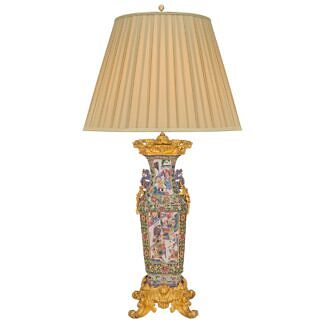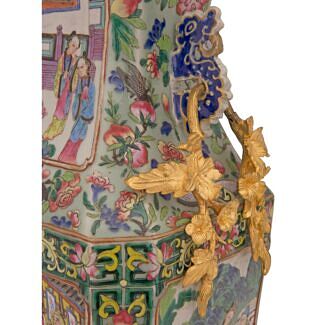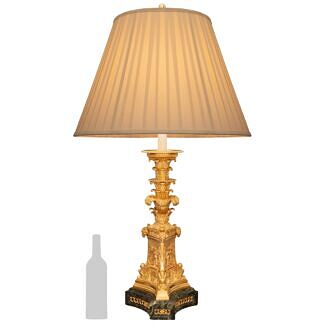A French 19th century Empire st. Belle Époque period Vert de Patricia and ormolu lamp
List: $12,800.00
A stunning and most impressive French 19th century Empire st. Belle Époque period Vert de Patricia and ormolu lamp. The large lamp is raised by a triangular Vert de Patricia marble base with cut corners and concave sides decorated with... — Read More
A stunning and most impressive French 19th century Empire st. Belle Époque period Vert de Patricia and ormolu lamp. The large lamp is raised by a triangular Vert de Patricia marble base with cut corners and concave sides decorated with beautiful pierced fitted scrolled foliate ormolu plaques. The striking central fut displays a fine stepped mottled base with beautiful richly chased sphinges, exceptional scrolled foliate and palmette designs, and winged maidens amidst Rinceau movements set on a superb hammered background. At the center is a beautiful band with finely detailed ram heads below exceptional richly chased acanthus leaves and ionic capital shaped movements all in a warm satin and burnished finish. — Read Less
All light fixtures have been inspected and rewired to US standards.
- Item # 13121
-
H: 45.75 in L: 11.25 in D: 10 in
H: 116 cm L: 29 cm D: 25 cm
- Shade Diameter: 26 in
- France
- 19th Century
- Marble/Stone, Ormolu
- Belle Époque Period Read More, Empire st. Read More
Related products
-
# 3828 - H: 40" L: 13" D: 11"
-
# 12094 - H: 48" L: 9" D: 26"
-
# 11473 - H: 54" L: 11" D: 11"


